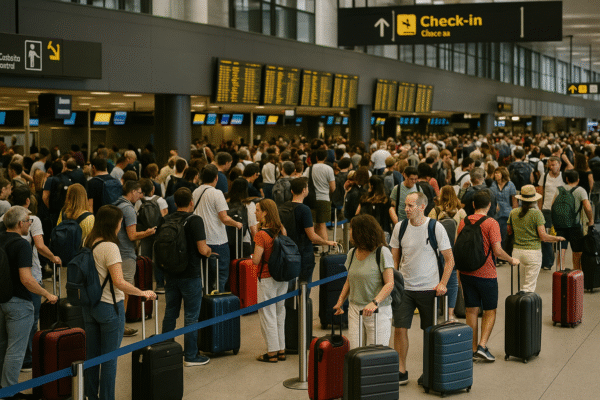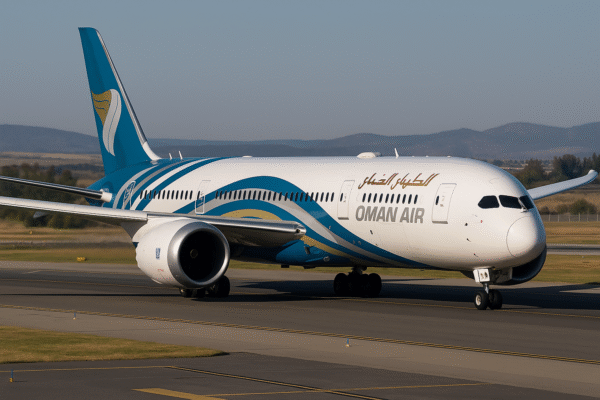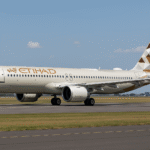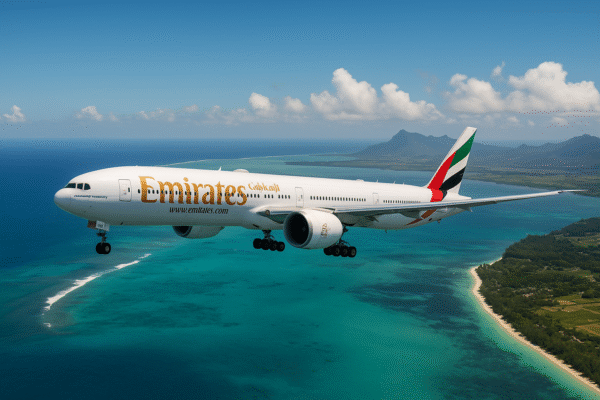Oman Air’s Direct Travel Boom: A Transformational Leap for Oman Tourism
Muscat, Oman – July 25, 2025 — Oman Air has achieved a groundbreaking milestone in the global aviation sector, reporting a historic surge in point-to-point travel that marks a pivotal moment in the Sultanate’s tourism transformation. From June 2024 to June 2025, the airline tripled its point-to-point passenger numbers—from 75,000 to 200,000—confirming Oman’s rising status as a sought-after primary travel destination rather than a mere stopover.
With 58% of Oman Air’s total passenger traffic now representing direct inbound visitors, the national carrier’s performance has far outpaced regional competitors across the GCC. This success is the result of a meticulously executed network strategy that mirrors Oman’s national vision for economic diversification through tourism, as outlined by Oman Vision 2040.
Strategic Focus on Long-Term Tourism Value
Rather than pursuing volume for volume’s sake, Oman Air focused on building long-term demand by targeting routes with high-yield potential and proven consistency. Markets that lacked sustainable travel trends were deliberately avoided in favor of reliable corridors that contribute meaningfully to the national economy.
This strategic pivot reflects the government’s tourism-led development agenda, supported by the Ministry of Heritage and Tourism and Oman Air’s own route performance analytics. According to Oman’s National Centre for Statistics and Information (NCSI), tourism contributed over OMR 1.3 billion ($3.4 billion) to the national GDP in 2024—a figure set to rise sharply with the airline’s newly expanded network.
Opening New Gateways to Europe and Beyond
A major highlight of Oman Air’s expansion in 2025 is the launch of direct services to Amsterdam Schiphol Airport, a key gateway to the Benelux region. This move taps into a high-value travel market known for long-haul vacationers and repeat visitors.
In addition, the airline is set to resume double-daily flights to London Heathrow by October 2025, strengthening its foothold in one of the world’s busiest aviation corridors. These additions come as part of a larger global strategy that favors long-term viability over rapid expansion.
By focusing on connectivity with Europe’s strongest tourism economies, Oman Air is ensuring that the right type of traveler—those who stay longer, spend more, and return often—has better access to the Sultanate.
Enhancing Accessibility and Travel Experience
Beyond route additions, Oman Air’s transformation reflects a deeper effort to make Oman more accessible and appealing to international travelers. The airline’s membership in the oneworld alliance has unlocked seamless travel to over 700 global destinations, enhancing Oman’s connectivity with markets in Japan, Australia, and North America.
This alliance empowers travelers to bypass congested Gulf hubs and opt for streamlined itineraries to Muscat and beyond. Reduced travel times, fewer layovers, and improved in-flight services have significantly elevated Oman’s appeal among premium travelers and long-haul holidaymakers.
Fueling Oman’s Sustainable Tourism Goals
This aviation success is not occurring in a vacuum. It directly supports Oman’s National Tourism Strategy 2040, which aims to attract 11.7 million international tourists annually while increasing the tourism sector’s GDP contribution to 10%. Oman Air’s performance plays a pivotal role in realizing this target by driving demand for premium experiences and supporting the growth of hospitality, cultural tourism, eco-tourism, and heritage sectors across the Sultanate.
As Oman continues to invest in infrastructure—from the world-class Muscat International Airport to integrated tourism complexes in Salalah and Nizwa—the role of Oman Air as a national catalyst becomes even more vital.
Setting a New Benchmark in Regional Aviation
Industry experts see Oman’s strategy as a compelling case study in aviation transformation. By aligning its air transport policy with national tourism goals, the Sultanate is proving that sustainable growth, not short-term spikes, offers the strongest foundation for resilience in the post-pandemic travel landscape.
Other GCC countries, long reliant on transit models and volume-driven strategies, may begin reassessing their approaches in light of Oman’s success. Oman Air’s trajectory offers a compelling alternative—one where aviation serves as a gateway to deeper cultural immersion, not just a corridor to somewhere else.
Positive Ripple Effects Across Sectors
The ripple effect of Oman Air’s growth extends to multiple sectors. Local tour operators, hotels, heritage sites, and artisanal markets are witnessing increased interest and revenue from high-spending tourists. The result is not just economic growth but cultural revitalization—where Oman’s rich traditions, natural landscapes, and authentic experiences become centerpieces of its international identity.
The Oman Investment Authority (OIA) and Ministry of Transport have both expressed support for this integrated model, highlighting its contribution to job creation and regional development.
Looking Ahead: A Sustainable Blueprint for Success
As Oman Air continues its upward momentum, observers note that its rise is emblematic of a broader transformation underway across the Sultanate. The dramatic year-over-year growth in direct passengers signals not just numerical achievement, but a visionary shift in how Oman is viewed on the global tourism map.
With a focus on quality over quantity, sustainability over saturation, and experience over expedience, Oman is emerging as a premium, purpose-driven destination—one that resonates with modern travelers seeking meaning, connection, and beauty.
From the deserts of Wahiba Sands to the fjords of Musandam, the Sultanate is writing a new chapter in global travel—powered by a national airline that knows exactly where it’s headed.
For more travel news like this, keep reading Global Travel Wire



















